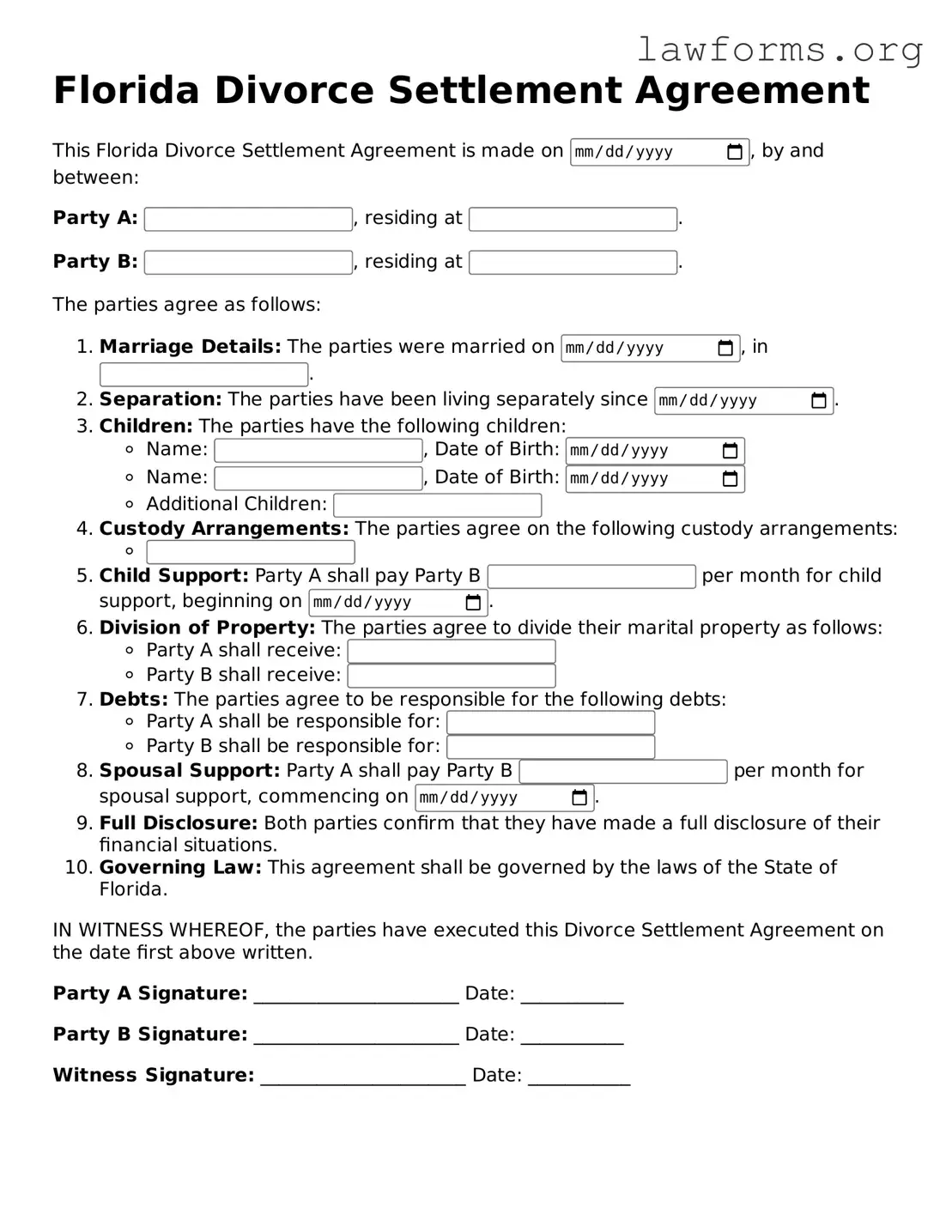Attorney-Approved Divorce Settlement Agreement Template for the State of Florida
The Florida Divorce Settlement Agreement form is a legal document that outlines the terms agreed upon by both spouses during a divorce. This form addresses various aspects such as property division, child custody, and support arrangements. Completing this form is essential for ensuring that both parties have a clear understanding of their rights and responsibilities moving forward.
To get started on your divorce settlement, please fill out the form by clicking the button below.
Customize Document Online
